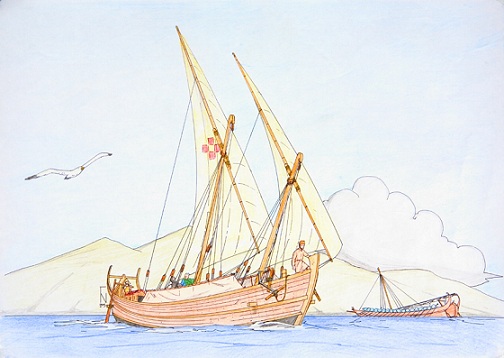The Greek Seamanship at the Byzantine Period
During the years of Early Byzantine Period (4th – 7th century AD), when the Empire was dominant in the Mediterranean, the Aegean islands formed part of the chain which consisted of Crete, Cyprus, Sicily, Malta and Sardinia and secured unity in its naval communications.
The theme of the Aegean, as an administrative region of the Byzantine state which, because of the extent of its coastline and its geographical position, supported the existence of an autonomous defensive fleet, included the Cyclades and the large islands of the Aegean Sea, the Hellespont and the Asian coast of Propontis until Prokonnesos.
All the Empire’s naval routes led to Constantinople and served its market. As Constantinople became the main trading centre, it was not only the routes which changed; it was also the types of ships. The boats, which transported grain to the capital, sailed from Alexandria to Constantinople via the Aegean islands and the Bosporus Straights. They thus needed to be smaller and more agile. These new requirements created the light, agile and fast freighter, the “dorkon”, with a capacity of 130-140 tons and triangular sails (“latinia”), while the “dromon”, which appeared in the 6th century AD and was used mainly for long distance trading, was essentially a war ship.
During the Byzantine period, the provincial ship-building workshops of Samos, Euboea, Rhodes, Crete and Limnos functioned efficiently, because of the natural wood resources these islands commanded. From the beginnings of the 8th century AD, within the framework of a more general organization of shipping, the “Law of Rhodian Sailors” was implemented; this was a collection of naval traditions current in the coastal areas of the eastern Mediterranean with characteristic principle the introduction of average , an institution which continued almost unchanged until modern times.
From the 11th century AD, piracy began to constitute a threat for sea journeys in the Aegean but the decline of the Byzantine commercial fleet did not become apparent until the 12th century AD; this allowed for an increase in the role of other powers in commerce and shipping in the area.
